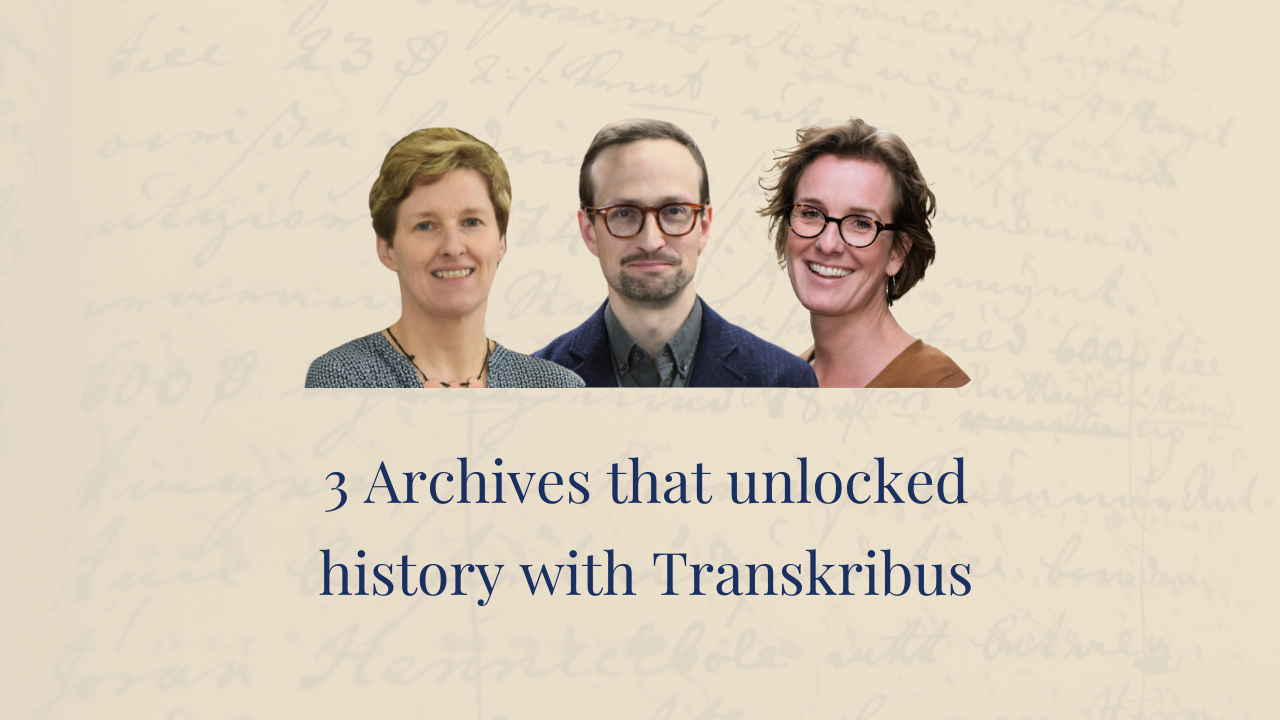
3 Archives that unlocked history with Transkribus
History isn't just dusty books on a shelf. It's the stories of our ancestors, the decisions that shaped our world, and the whispers of lives lived long ago. But sometimes, these stories are locked away, hidden in handwritten documents that are difficult to decipher. That's where Transkribus comes in. This powerful tool is helping archives around the globe unlock their collections and share them with the world. Here are three inspiring examples.
 How the Swedish National Archives created the "Swedish Lion" model
How the Swedish National Archives created the "Swedish Lion" model
Imagine trying to piece together the history of a nation from thousands of pages of sprawling handwriting. That's the challenge the Swedish National Archives faced when embarking on the "Swedish Lion" project. This ambitious endeavor aimed to create a large model capable of transcribing a wide range of historical texts in Swedish. Transkribus proved to be the key, enabling the creation of a custom AI model trained on the specific handwriting styles of the era. The result? A treasure trove of historical insights now accessible to everyone.
Read the full story of the Swedish Lion project.
 200 years of Bautzen's city history at your fingertips
200 years of Bautzen's city history at your fingertips
For centuries, the city of Bautzen, Germany, has meticulously documented its history. But these records, spanning 200 years, were locked away in handwritten form. In 2021, the Achivverbund Bautzen decided to improve access to this vast collection and create digital versions of each document. By training the platform on the specific handwriting found in Bautzen's archives, researchers were able to create a searchable digital archive, making the city's rich past accessible to both scholars and local residents.
Discover how Bautzen brought its history to life.
.jpg?width=1920&height=1080&name=NAN%20(1).jpg) Transcribing 3 million scans at the National Archives of the Netherlands
Transcribing 3 million scans at the National Archives of the Netherlands
Home to over 140km of documents, the National Archives of the Netherlands is the country's largest archive and a trailblazer when it comes to making collections digitally accessible. In this first Transkribus project, they transcribed around 3 million pages from the 17th to the 19th centuries, creating digital versions that could be easily accessed by researchers around the world and laying the groundwork for future digitisation projects.
Find out more about this innovative project.
These are just a few examples of how Transkribus is helping to break down the barriers of the past. By making handwritten documents accessible, it's not just preserving history – it's bringing it to life.


